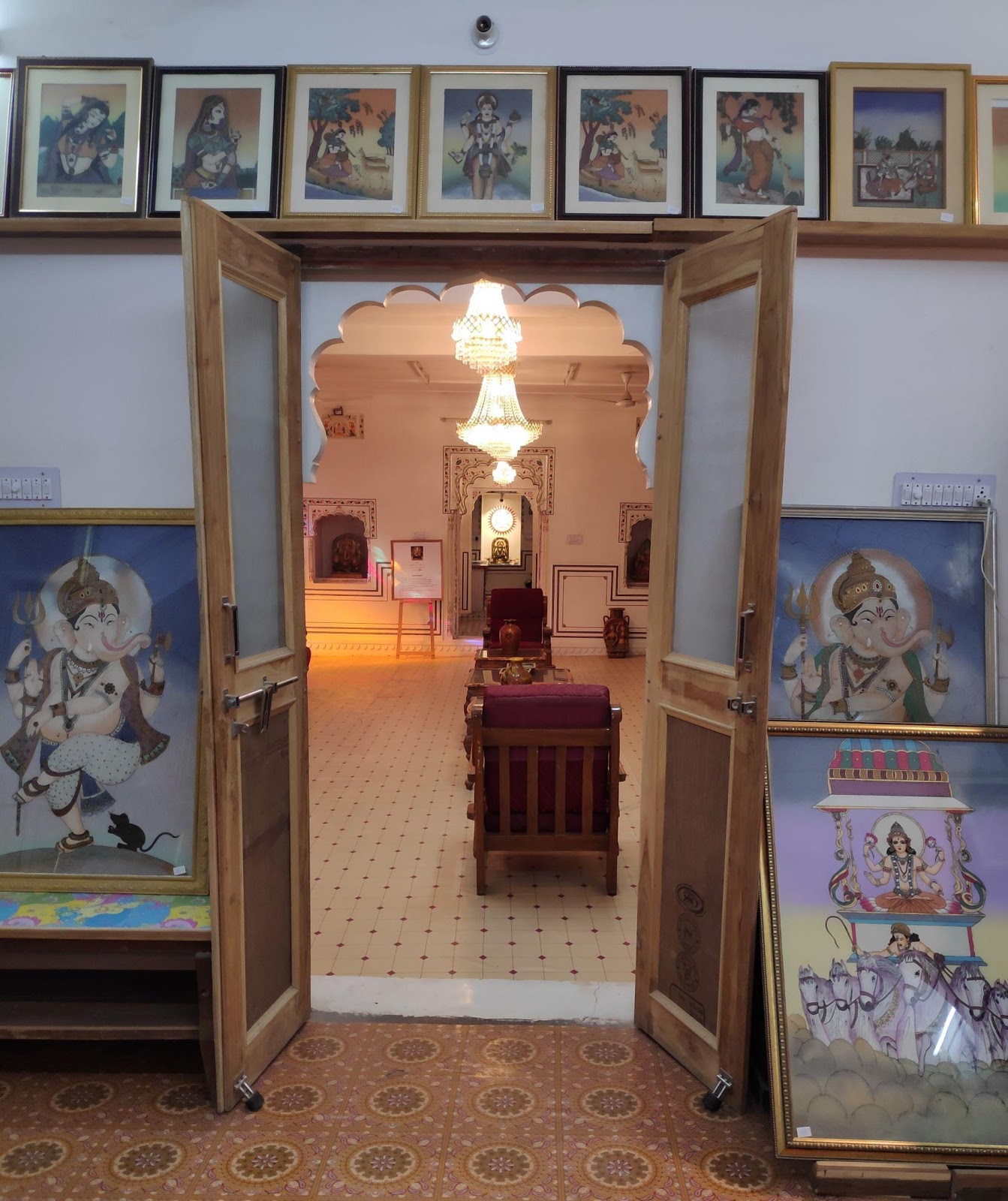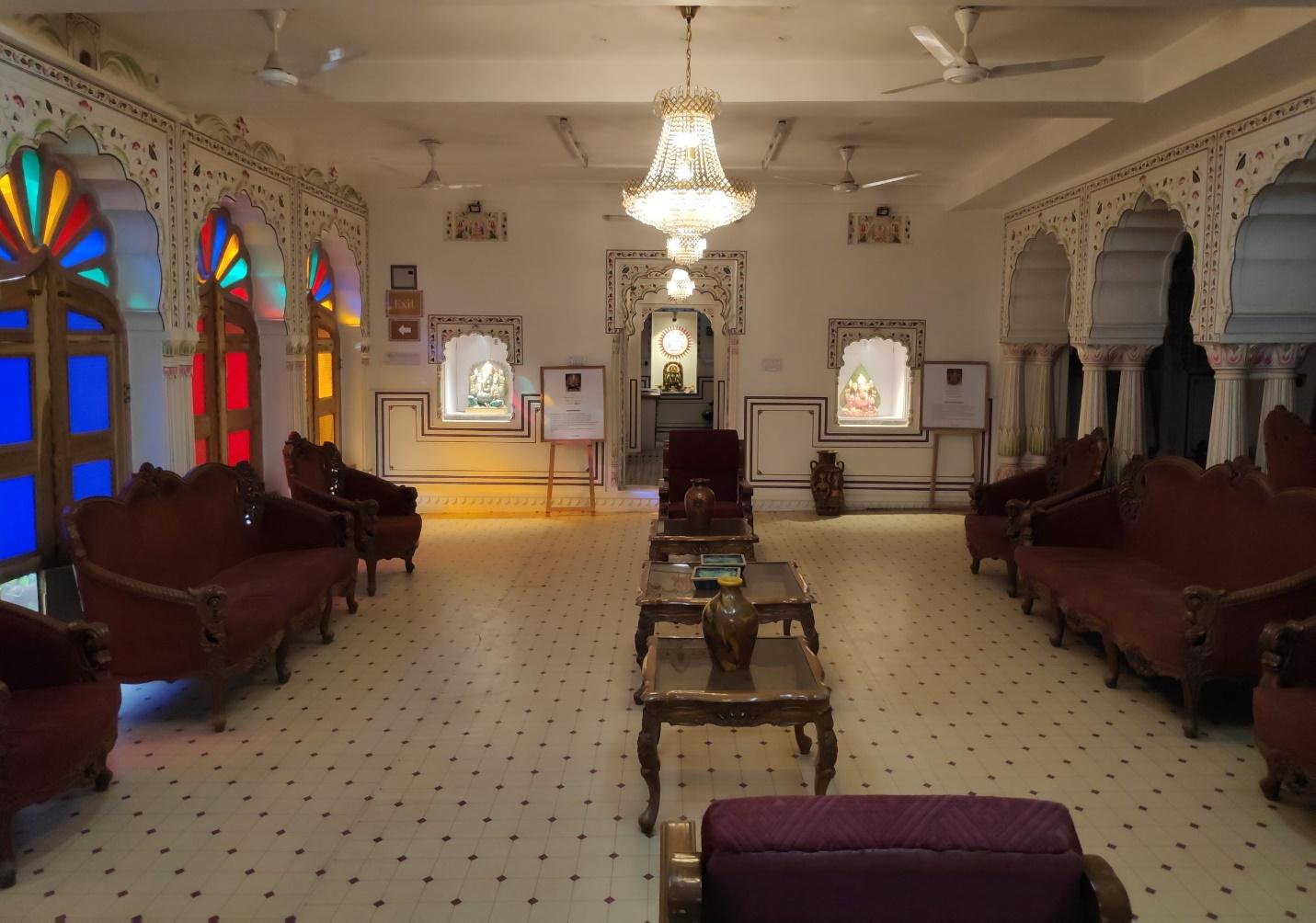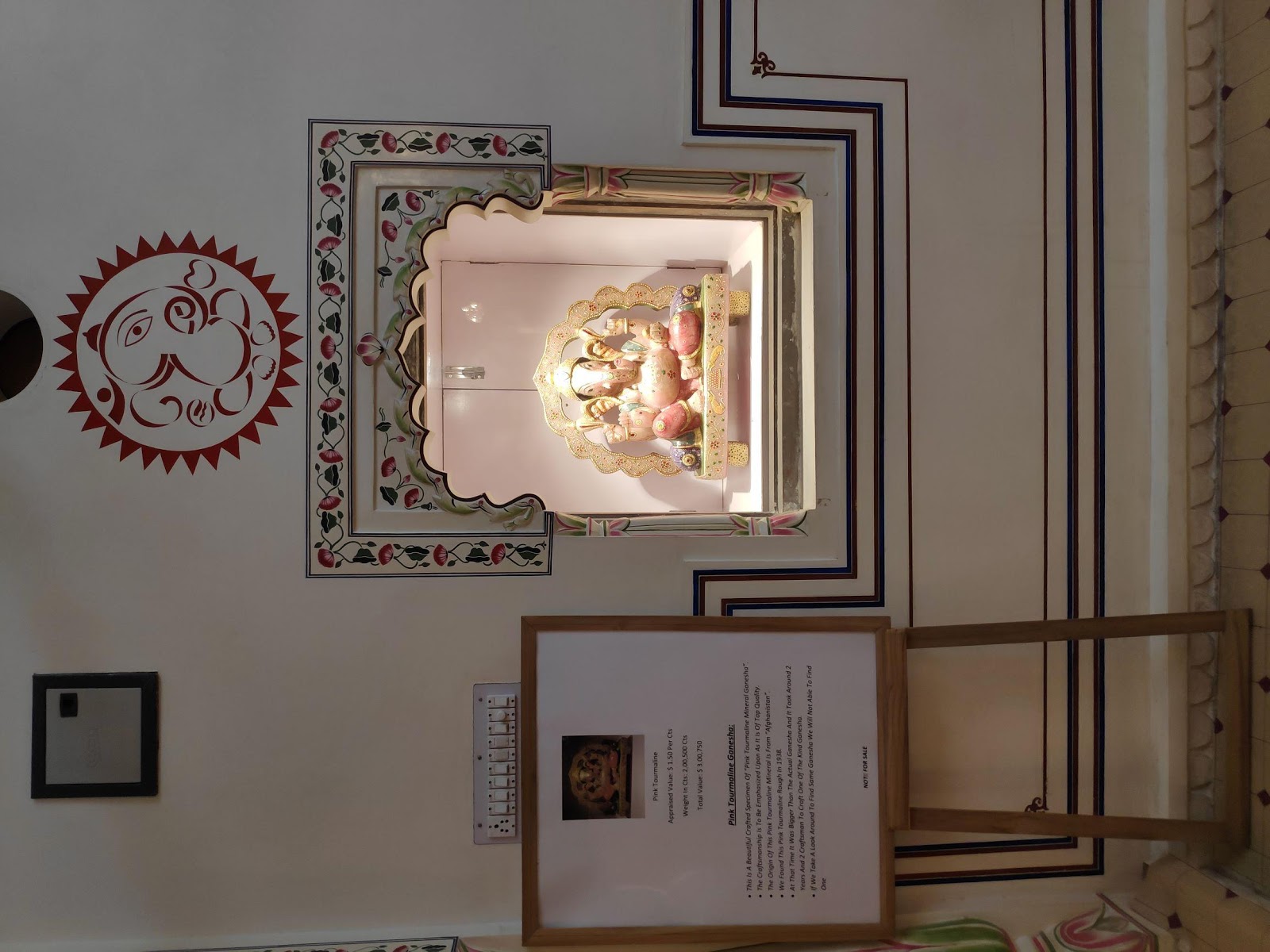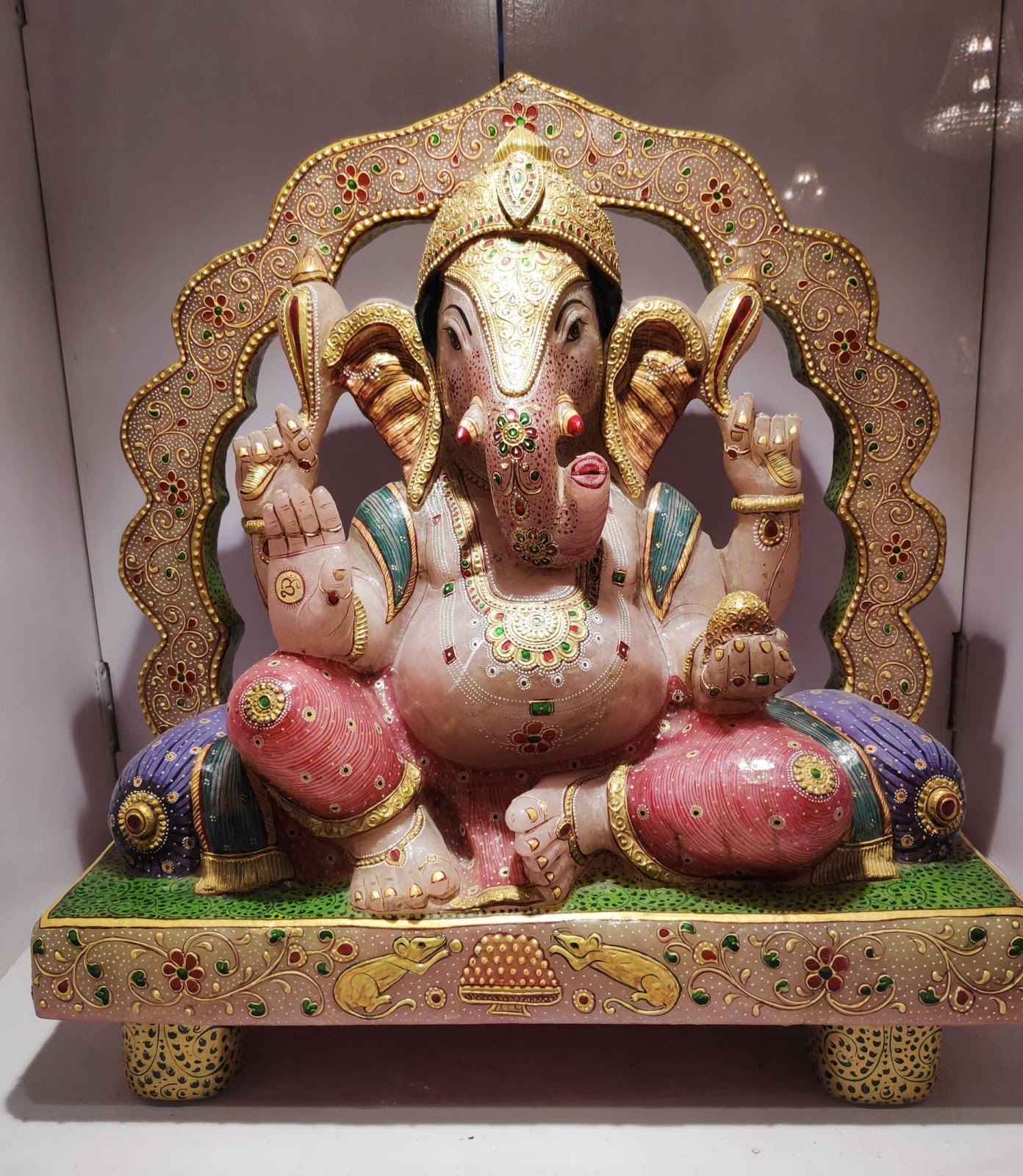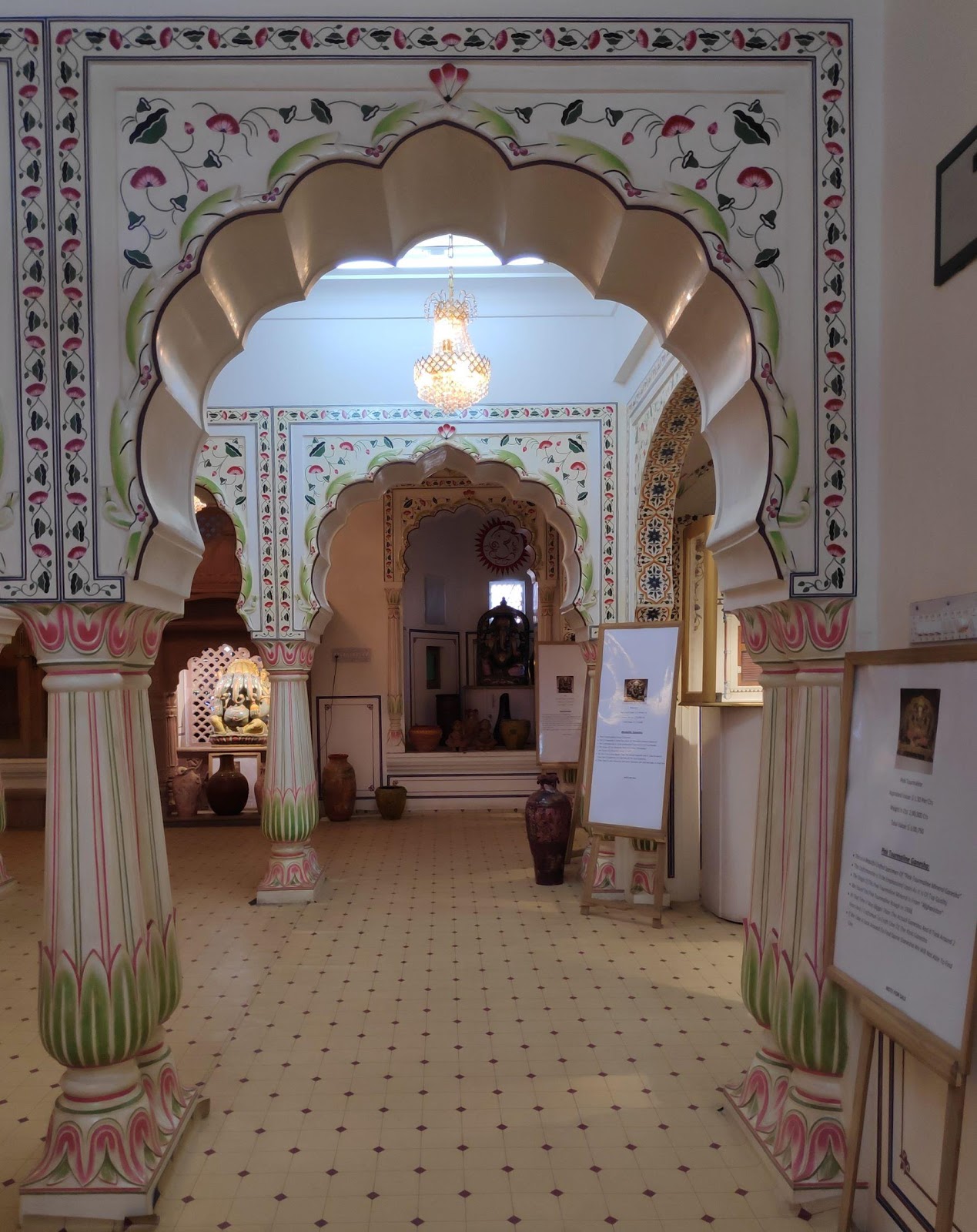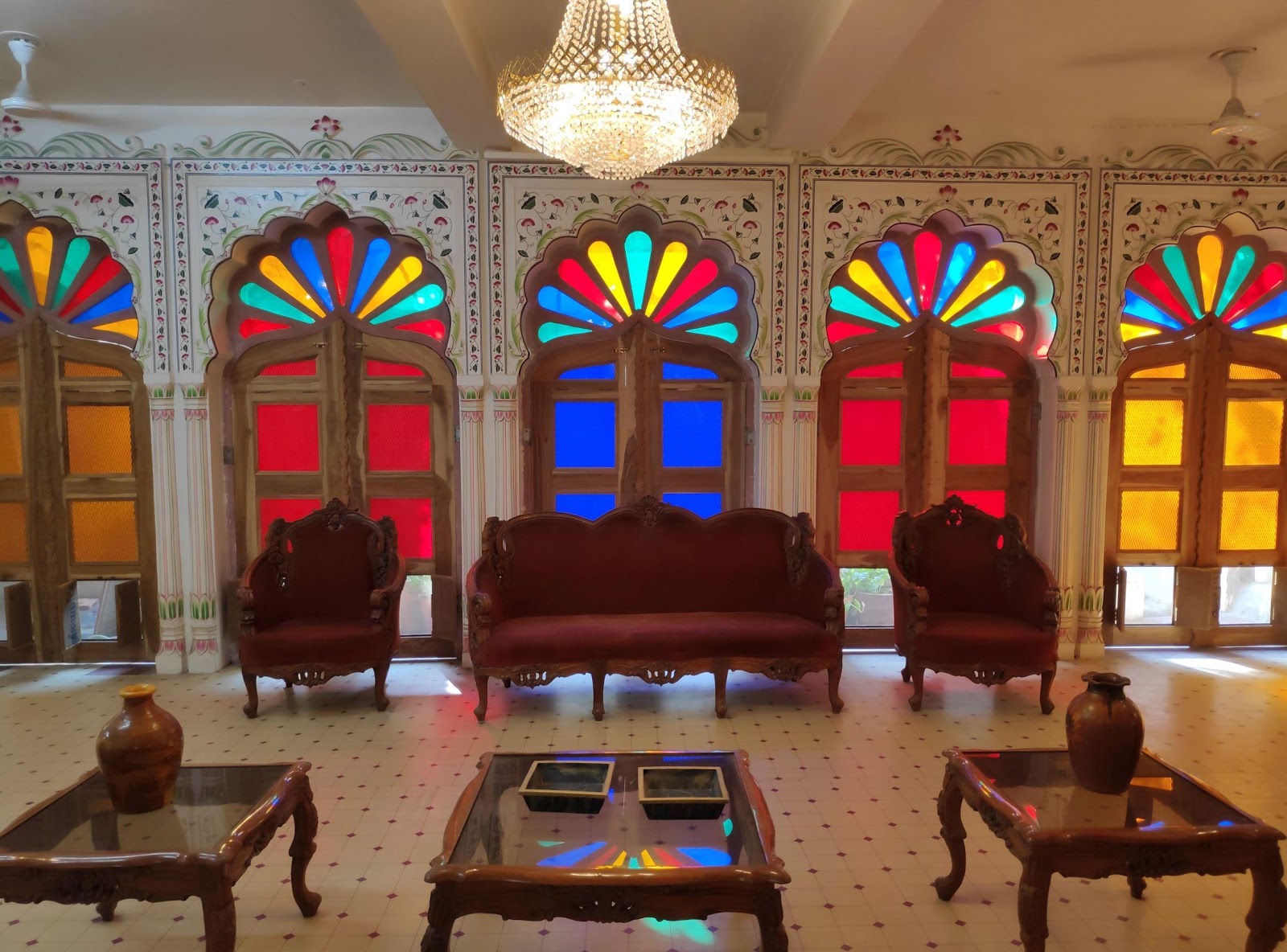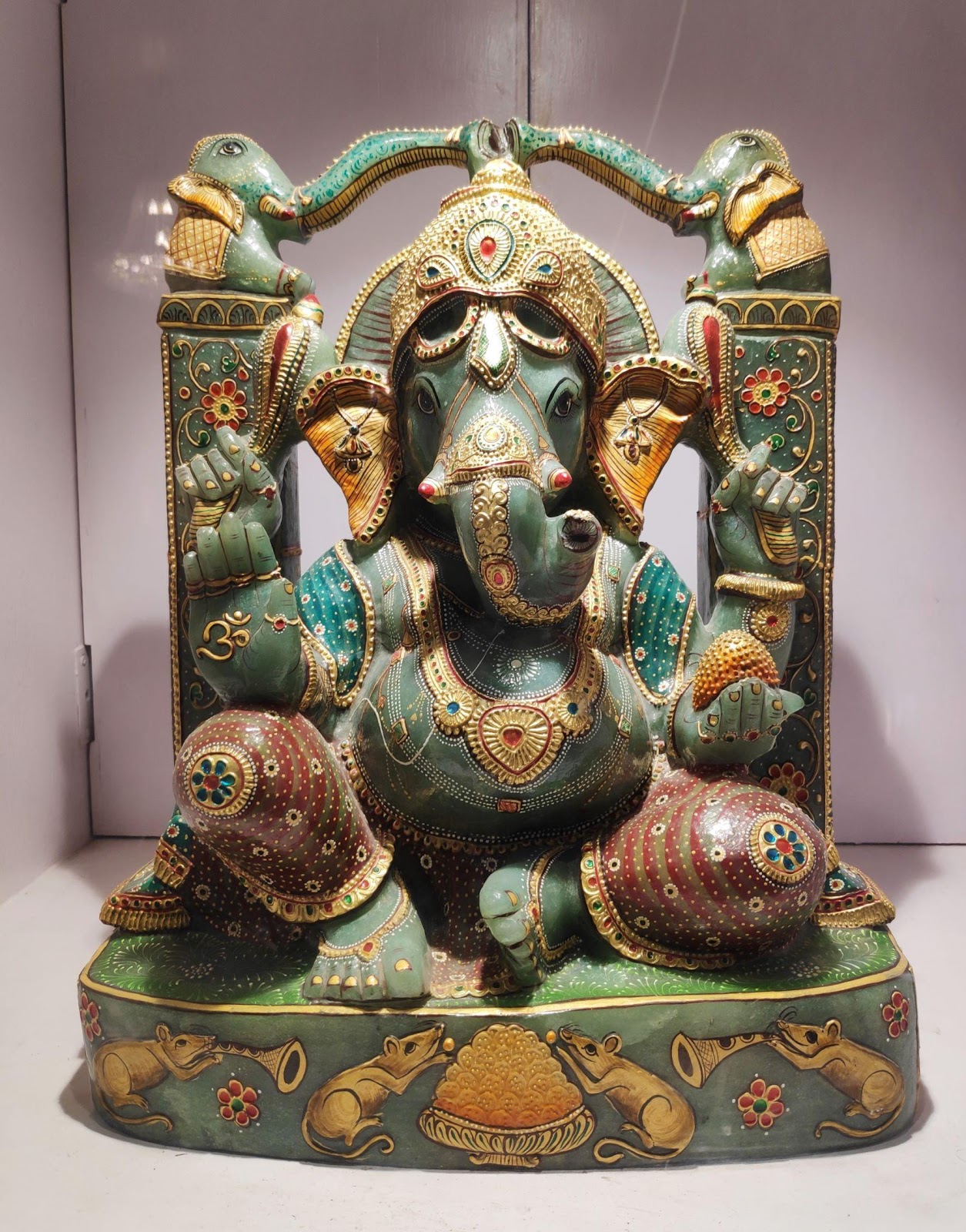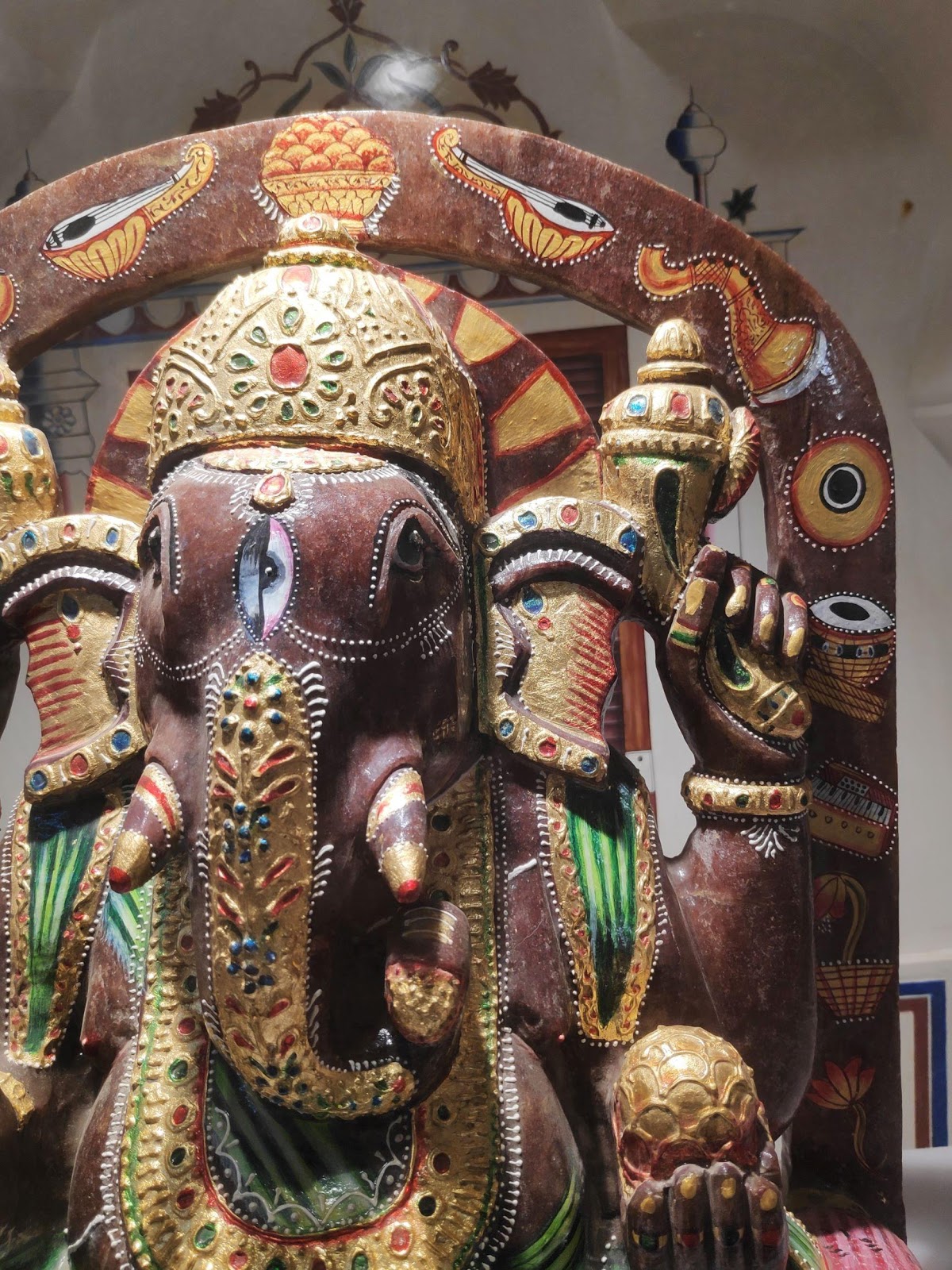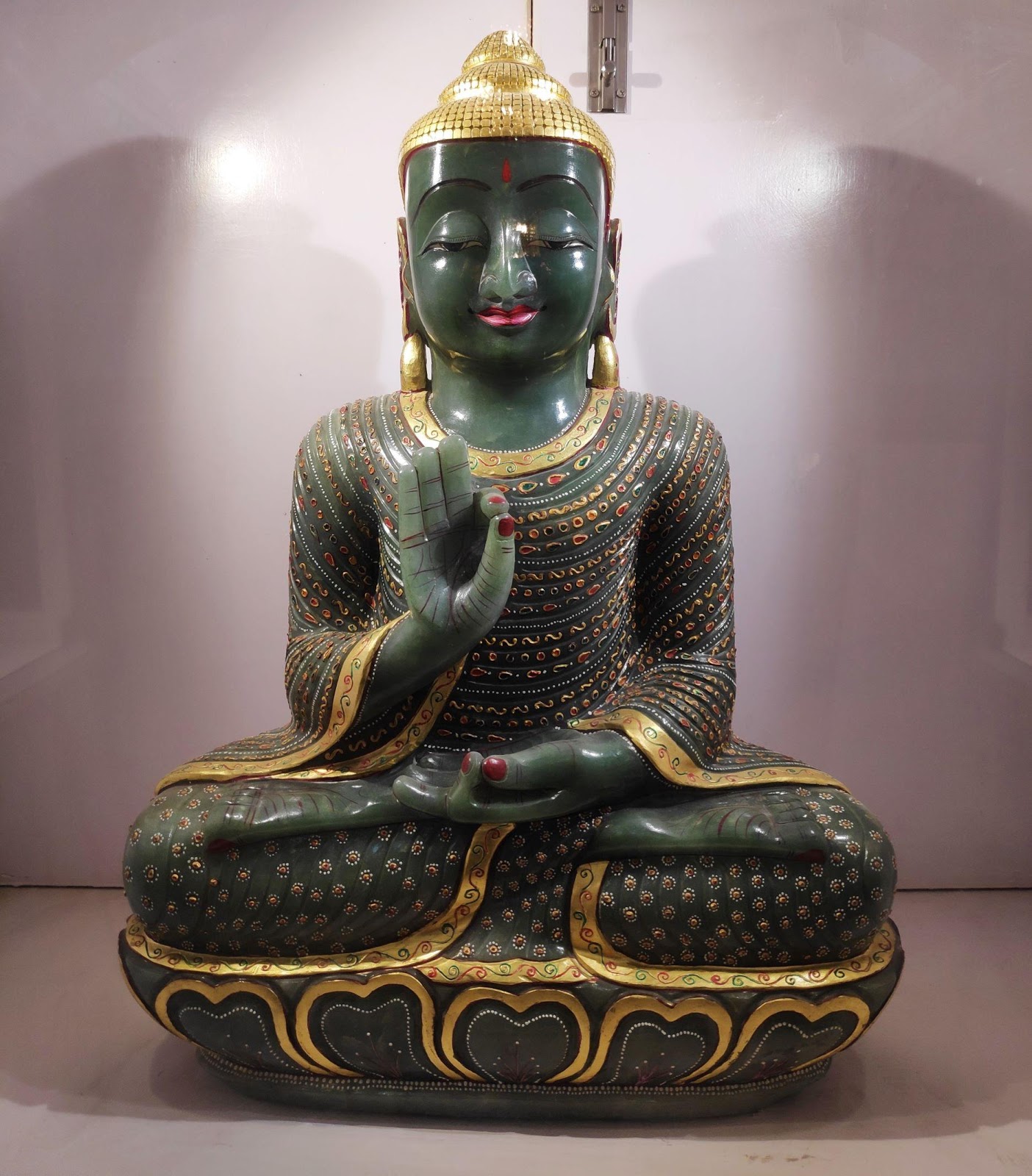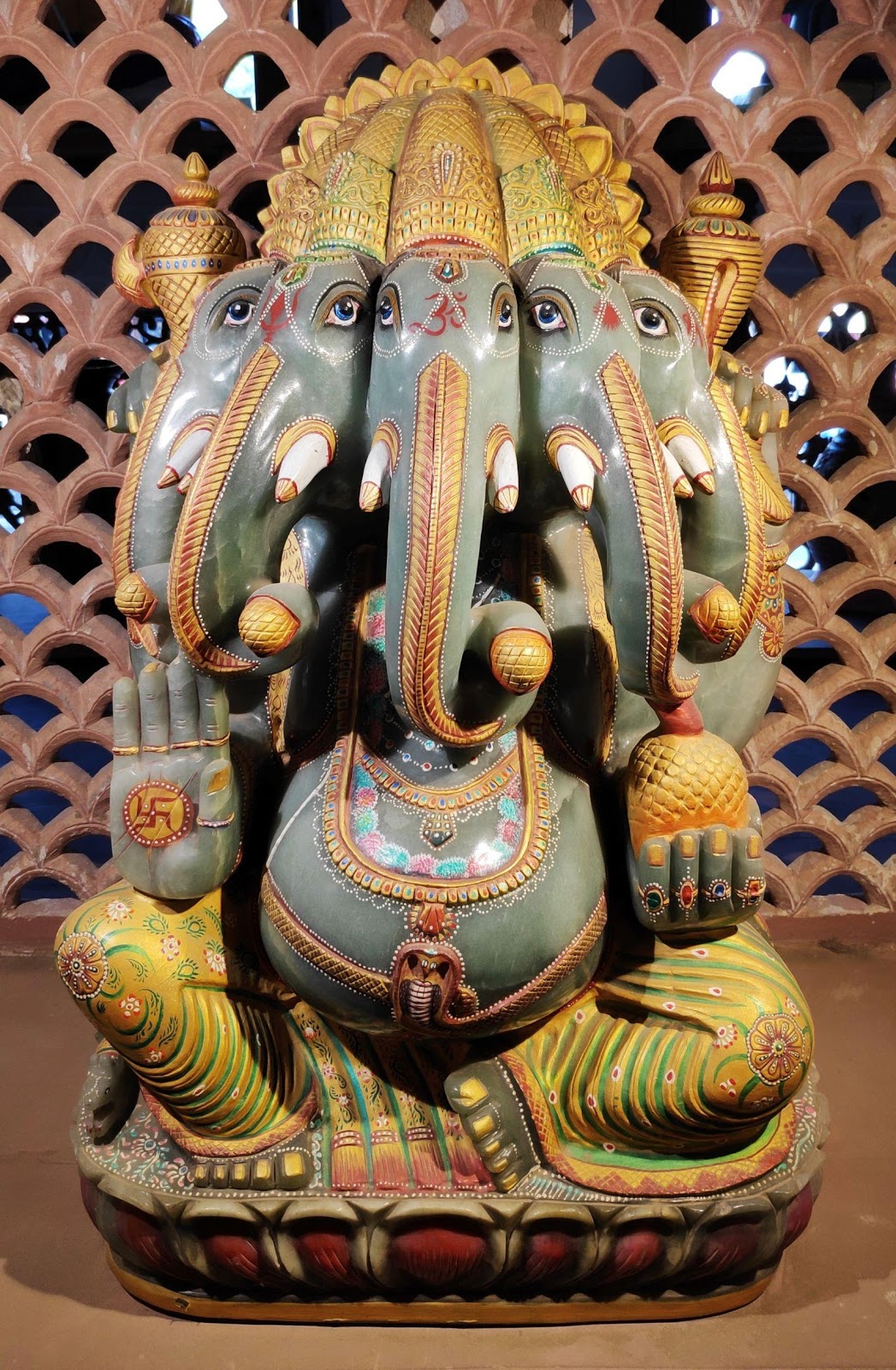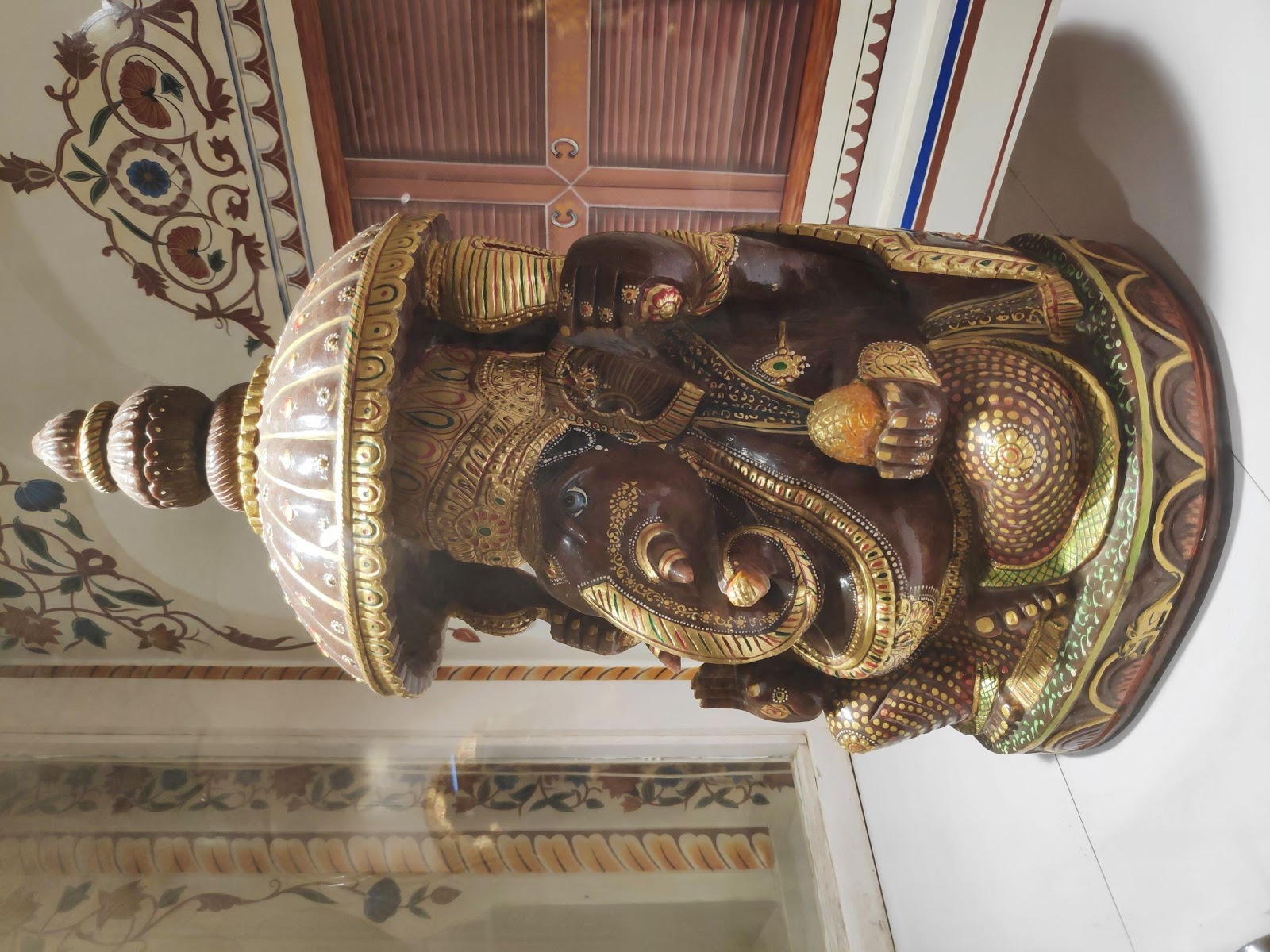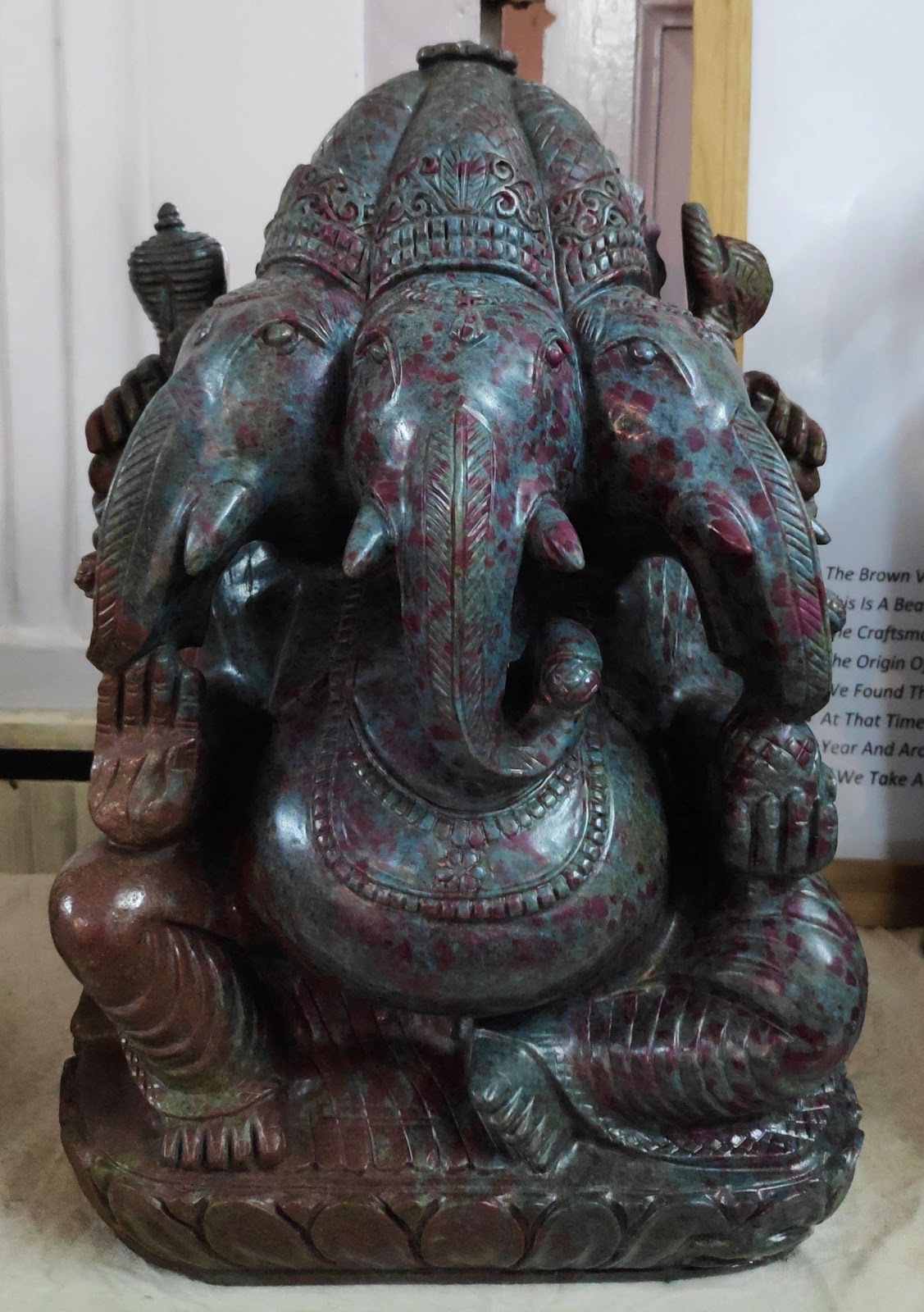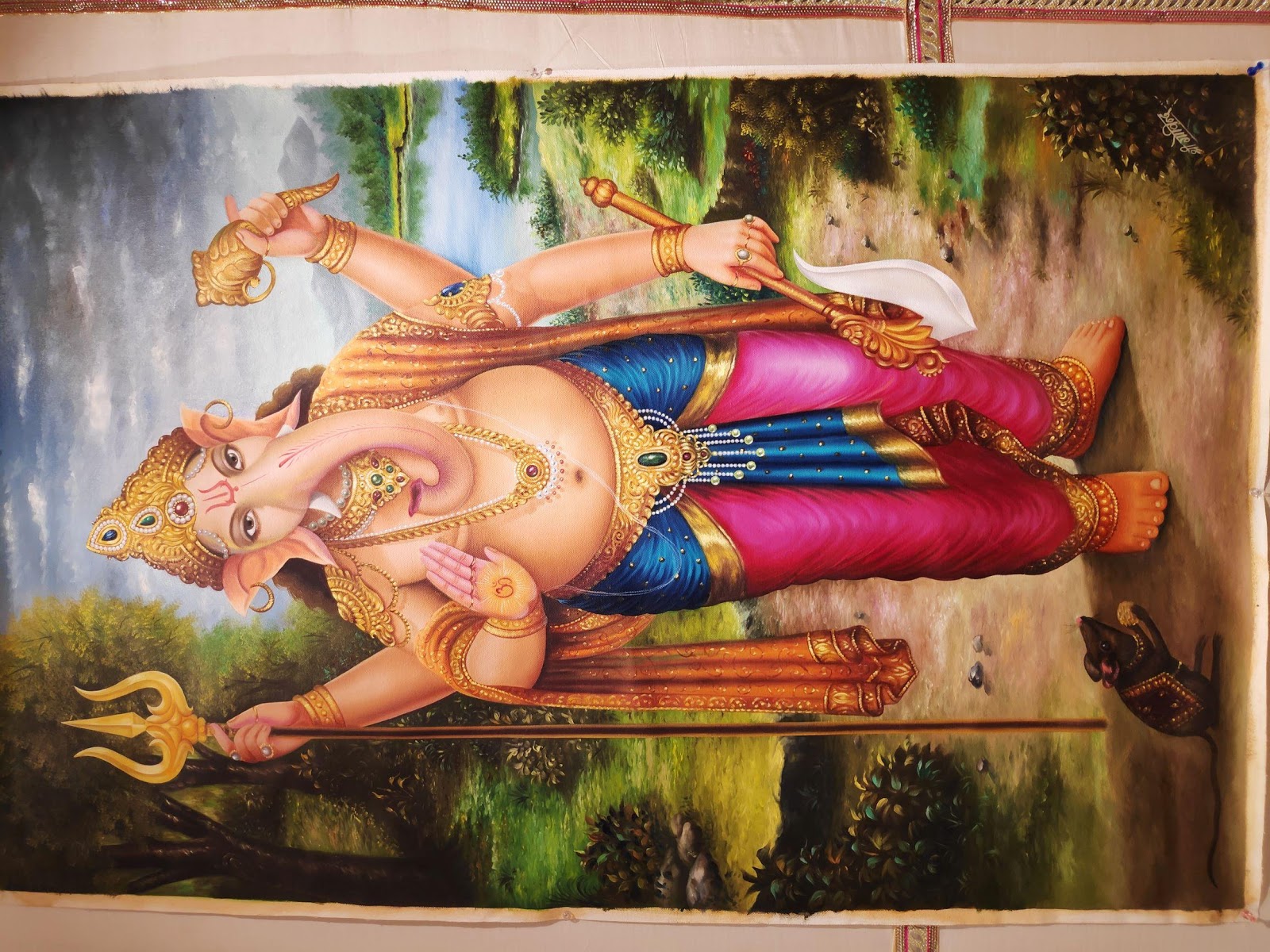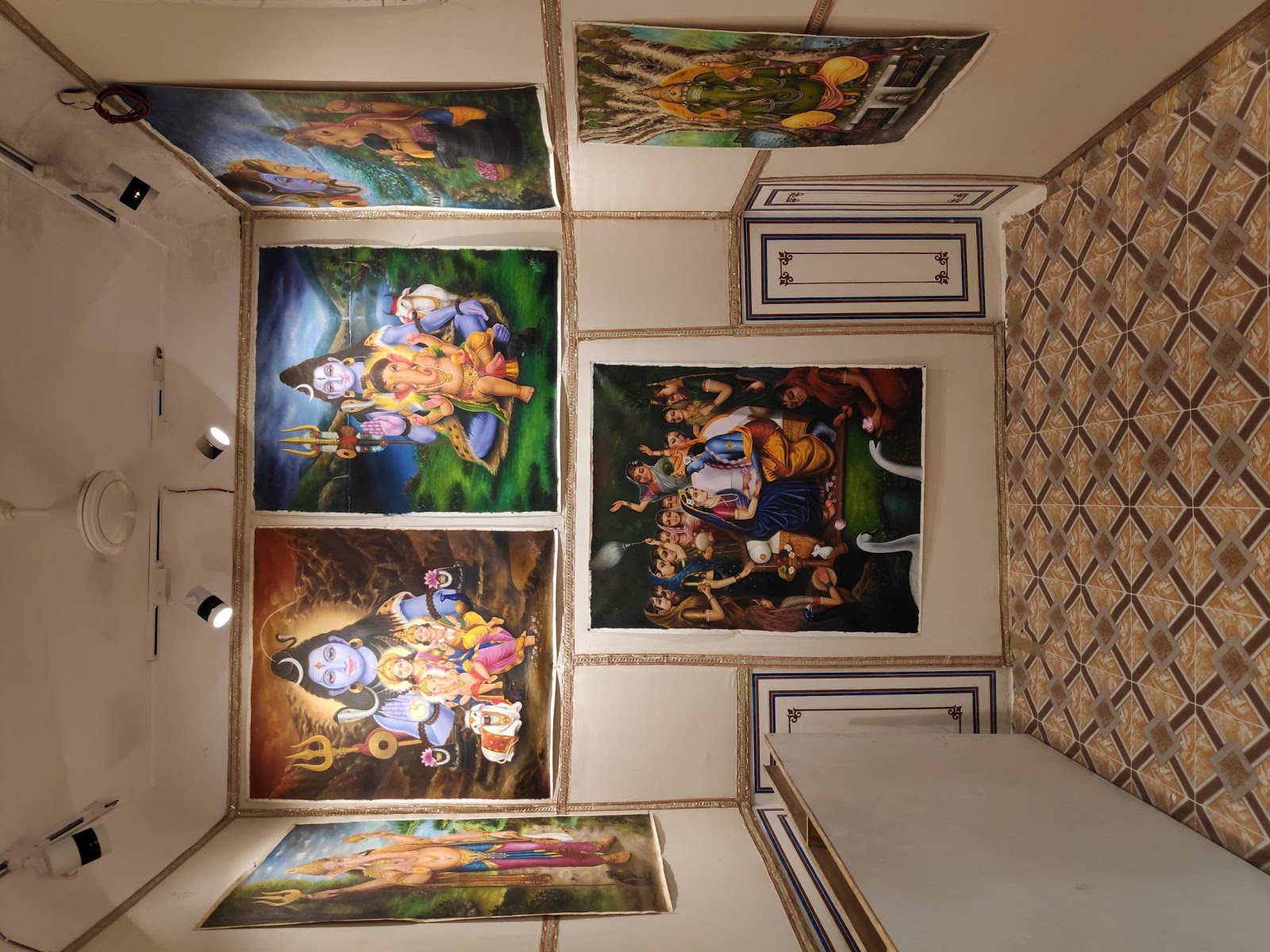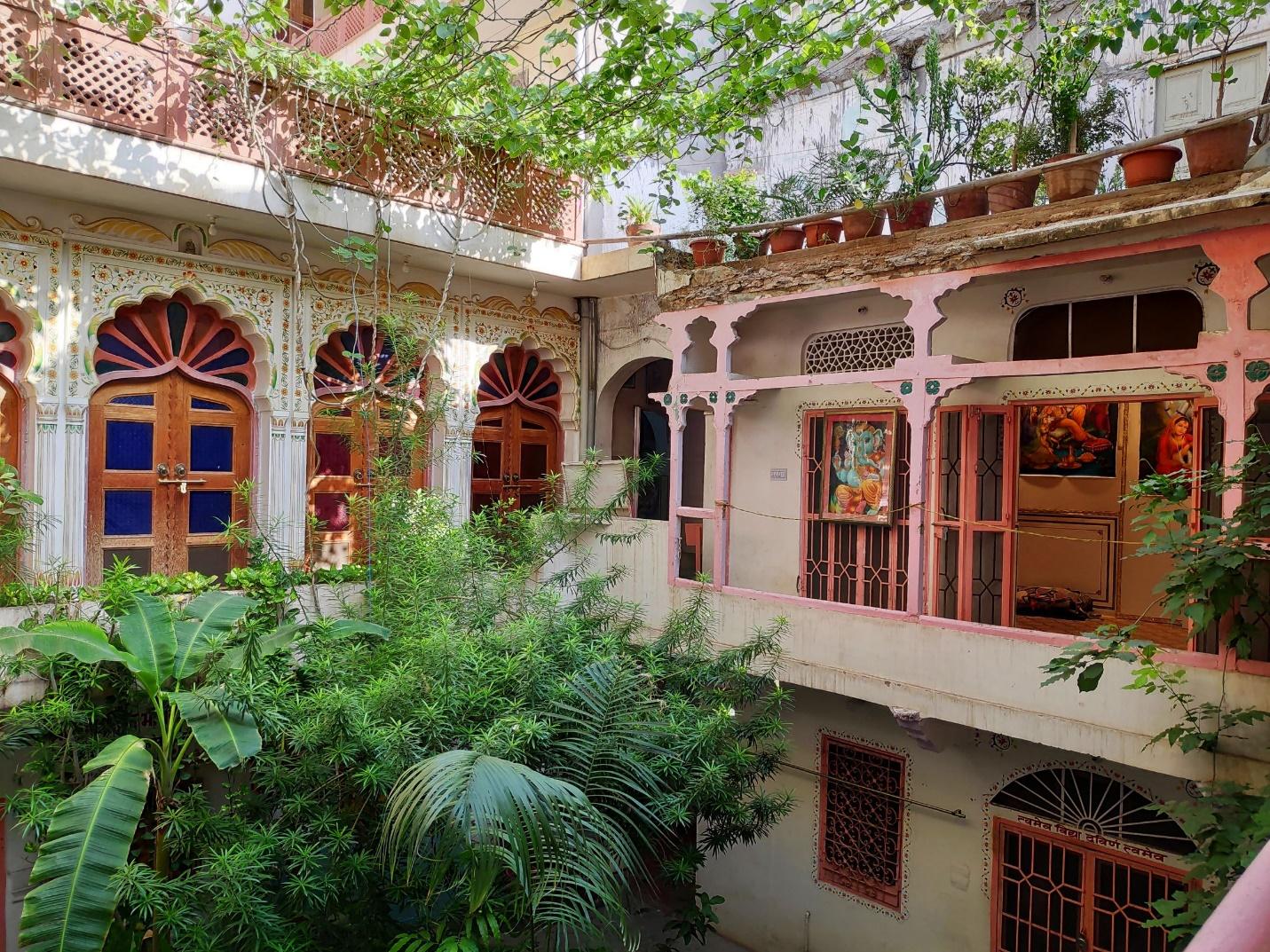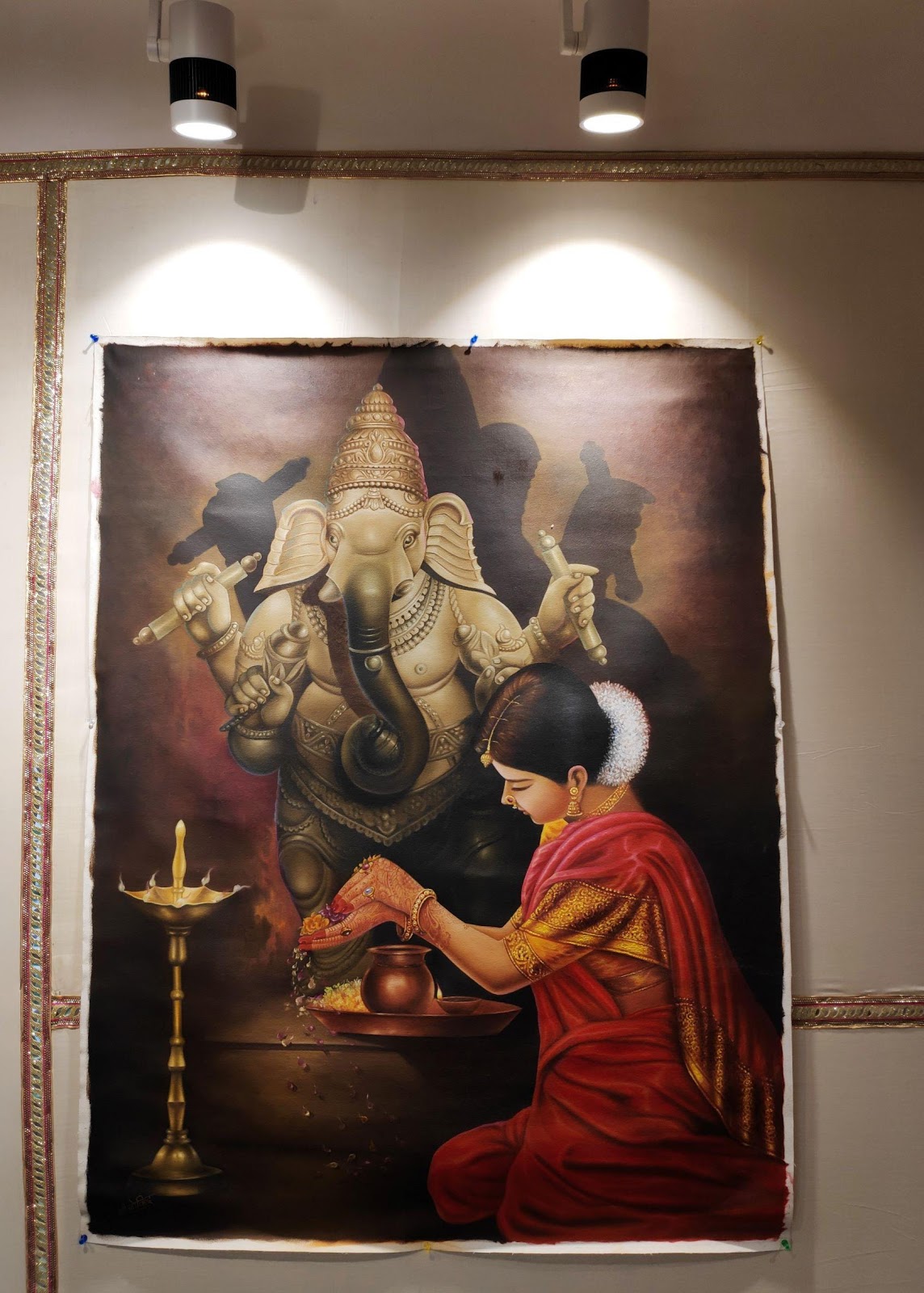Museum Address
499 Bhargava Bhavan, Chandi Ki Taksal, Jaipur
Email
bhargavadivya90@gmail.com
When was the museum established?
2016
Briefly describe the history of the museum, its collection and donors.
Nestled in a 250-year-old heritage building or haveli, the Gemstone Ganesh Museum is located in the city of Jaipur. One can spot an all-white structure amidst the cluster of pink buildings on Hawa Mahal Road; this is where this museum is housed. Established in 2016, the museum houses a collection of Ganesha idols belonging to Mr Dinesh Bhargava. This collection includes over 40 idols, carved out of gemstones such as rubies, emeralds, sapphires, tourmaline and more. Bhargava started buying gemstone Ganesha idols around 40 years ago, sourcing them from various artists across India.
The haveli itself is artfully constructed. It was built during the reign of the Rajputs and displays similar aesthetics and architecture to that of Jaipur’s City Palace. The walls and pillars of the museum are decorated with frescoes. Recently restored by the property owners, the frescoes are painted in the traditional Arayash technique of Rajasthan.
One is welcomed by a gemstone store at the entrance of the museum, which leads into a passage flanked by life-size, intricately painted Ganesha idols. The museum hall on the first floor houses even more idols in cabinets. The idols are in various mudras and depict a distinct iconography. One of the most striking pieces is the panchmukhi or five-headed Ganesha, chiselled in emeralds and sapphires. Another noteworthy piece is the trinetra or three-eyed Ganesha.
The building also has two art galleries that house artwork of Ganesha, predominantly oil paintings and gemstone-powder paintings. The paintings relate a variety of stories and depict the different stages of Lord Ganesha’s life. Each work of art is hand-painted by an in-house artist.
In the atelier, one can also witness how the gemstone pieces are crafted. Guided tours of the museum complex help one understand the art, architecture and history of the structure in its local context.
Workshops/seminars/lectures
No
Library and archives services
No
IT facilities ( Photocopying, printing, computer )
No
Conference/ Seminar hall
No
Who manages the museum?
Private Organization
Person-in-charge of the museum
Owner
Reference Link
Information based on personal interaction with Ms Divya Bhargava.
What is the average duration to see the museum?
less than 1 hour
Map your museum’s correct location on the map given below.
Is the museum currently closed?
No
Image for museum exterior/building
Gallery Images
Image title
The entrance to the museum hall, with gemstone-powder paintings around it
Image title
The museum hall
Image title
One of the pieces on display
Image title
A Ganesha idol made of pink tourmaline
Image title
Restored pillars and frescoes in the museum
Image title
A view of the museum hall
Image title
Stained-glass doors in the museum hall
Image title
An emerald idol of Ganesha
Image title
A rhodolite-studded Ganesha with a third eye
Image title
A jade Buddha
Image title
The panchmukhi or five-headed Ganesha with emeralds
Image title
A hessonite Ganesha idol with a chhatri or decorative umbrella
Image title
A trimukhi or three-headed Ganesha idol with rubies. The idol is carved but not painted
Image title
A life-size oil painting of Ganesha in the art gallery
Image title
The art gallery with oil paintings depicting the different stages of Ganesha’s life
Image title
External view of the museum hall and gallery
Image title
An oil painting on canvas, displayed in the art gallery
Image title
The museum staff
Image title
Miniature paintings on display at Uma Art Gallery
Image title
The entrance to Uma Art Gallery.
Image title
Miniature paintings and gemstone-powder paintings in the gallery
Image title
The atelier of the in-house artist .
Image title
An oil painting portraying Lord Ganesha
Image title
A collection of Ganesha idols and oil paintings in the outer hall
Entry fee information
Rs 200 per person
Opening Days
Sunday
Monday
Tuesday
Wednesday
Thursday
Friday
Saturday
Public holidays
The best time of the day to visit the museum?
Best time to visit: During the evening, from 4:30 to 8:30 pm. The most crowded hours are between 5-6 pm, while the least crowded hours are between 1-3 pm
Interesting things about the Museum
The historical nature of the building in which the museum is housed is sure to catch the attention of visitors. The building itself serves as a window to the art and architecture of Rajasthan as a whole.
The terrace of the building (which is accessible during the guided tour of the complex) gives a beautiful 360-degree view of Jaipur! One can see Amber Fort, Nahargarh Fort, parts of City Palace and Sarga Suli on one side, with the Aravali Range on the other side. The best time to be on the terrace is at sunset. Apart from the painted and polished finished pieces, some idols are in their rough stages, with no polish and decorations. They demonstrate the different stages of the craft. The building is located opposite Ramprakash Cinema, the oldest theatre in the city.
a. Helpfulness (guides, guards, curator, director)
Great
b. Approachability (curator, director)
Great
a. Building
Above average
Name of Museum Surveyor
Nehal Rajvanshi

